Should local governments and property developers think about smart city eco-systems, rather than siloed smart city implementations?
Over the past few years, OneWiFi have been working with many Councils in Australia on Smart City engagements across different use cases. The number of strategic themes in relation to Smart City, include Place Activation, Operational Efficiency, Sustainability, Data Management and Sharing, and Smart Infrastructure.
Smart City, by nature, is broad and encompassing with a variety of applications for different use cases as shown in Exhibit 1. Essentially, Smart City tries to address different use cases to drive outcomes which are enabled by a range of sensor and control technologies and solutions. These technologies all have varying infrastructure, network, platform, and integration requirements. If Smart City is approached in a siloed manner without incorporating into the operating model, the investment will be unlikely to deliver the desired benefits in the long run.
Hence, how do we approach Smart City in an integrated and harmonised manner? How do we leverage Smart Infrastructure (i.e. network and platform) to bring together disparate applications to derive harmonisation opportunities, cost and operational synergies?
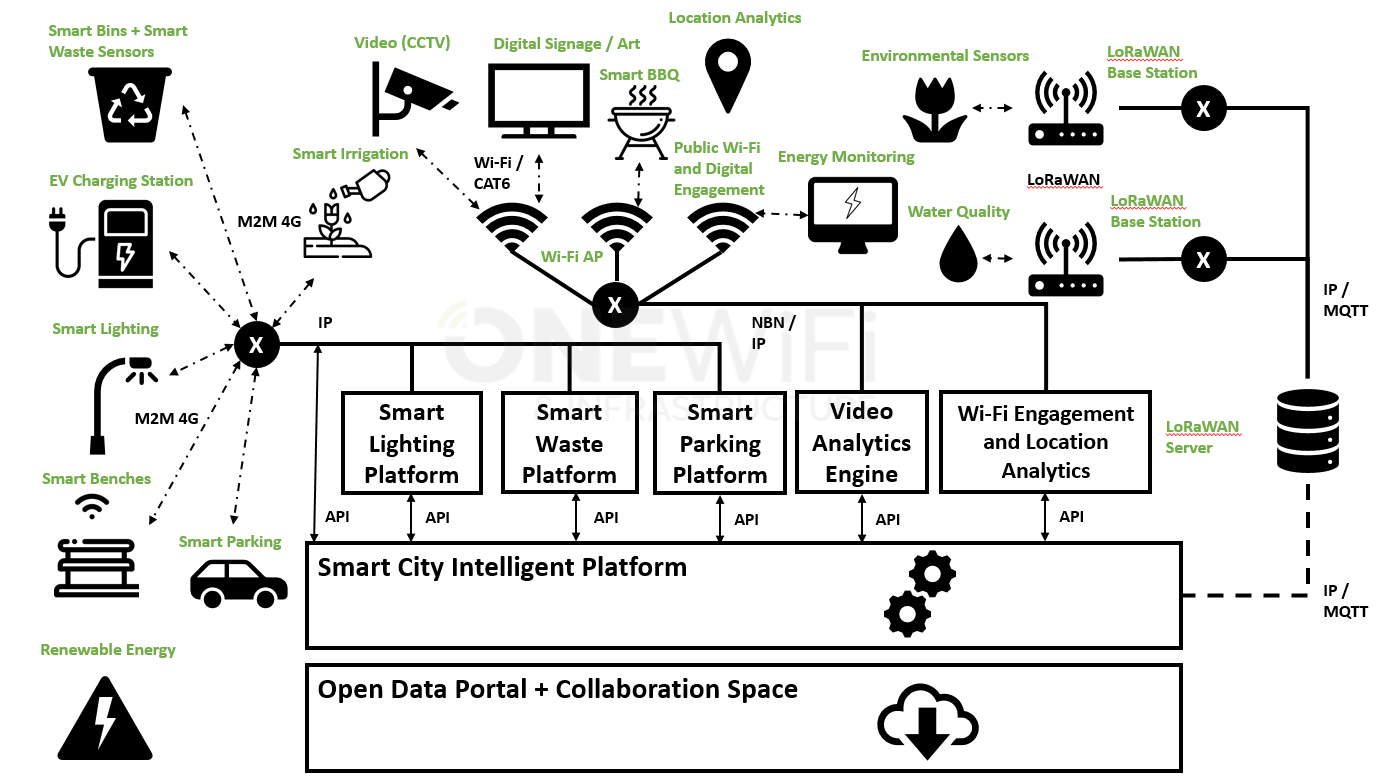
Exhibit-1-–-Harmonisation-of-disparate-Smart-City-applications
Smarter Networks
One of the common pitfalls that we have encountered is the thinking that Smart City is dictated by the underlying network – that all applications need to be delivered over a particular network, whether it is LoRaWAN, Sigfox, Wi-Fi, mobile, or other network technologies. Just because prior investments have been made on a specific network, it doesn’t meant that all Smart City applications must run over it to justify the initial network investment decision. This is essentially putting all eggs in one basket. This approach also forces trade-offs to be made on Smart City use cases to cater for network technological limitations, such as coverage, bandwidth, packet size, airtime etc.
OneWiFi’s view is that Smart City should take a ‘Network Agnostic’ approach where possible, meaning that the most appropriate network should be used that best address the Smart City use case in the most cost-effective manner, and considering power, asset and environmental factors. It is not a ‘one-size-fit-all’ approach as there will be applications and scenarios better suited to one type of network over another (e.g. some use cases are better delivered over LoRaWAN than Wi-Fi and vice-versa).
For example, fixed network, Wi-Fi and potentially 4G/5G mobile would be best suited to support high bandwidth applications such as video analytics (Exhibit 2), and applications that require near real-time control and response (e.g. security gate controllers). With high bandwidth networks, the availability of power and communication facilities are essential to support the network security, QoS, and remote network monitoring overheads.
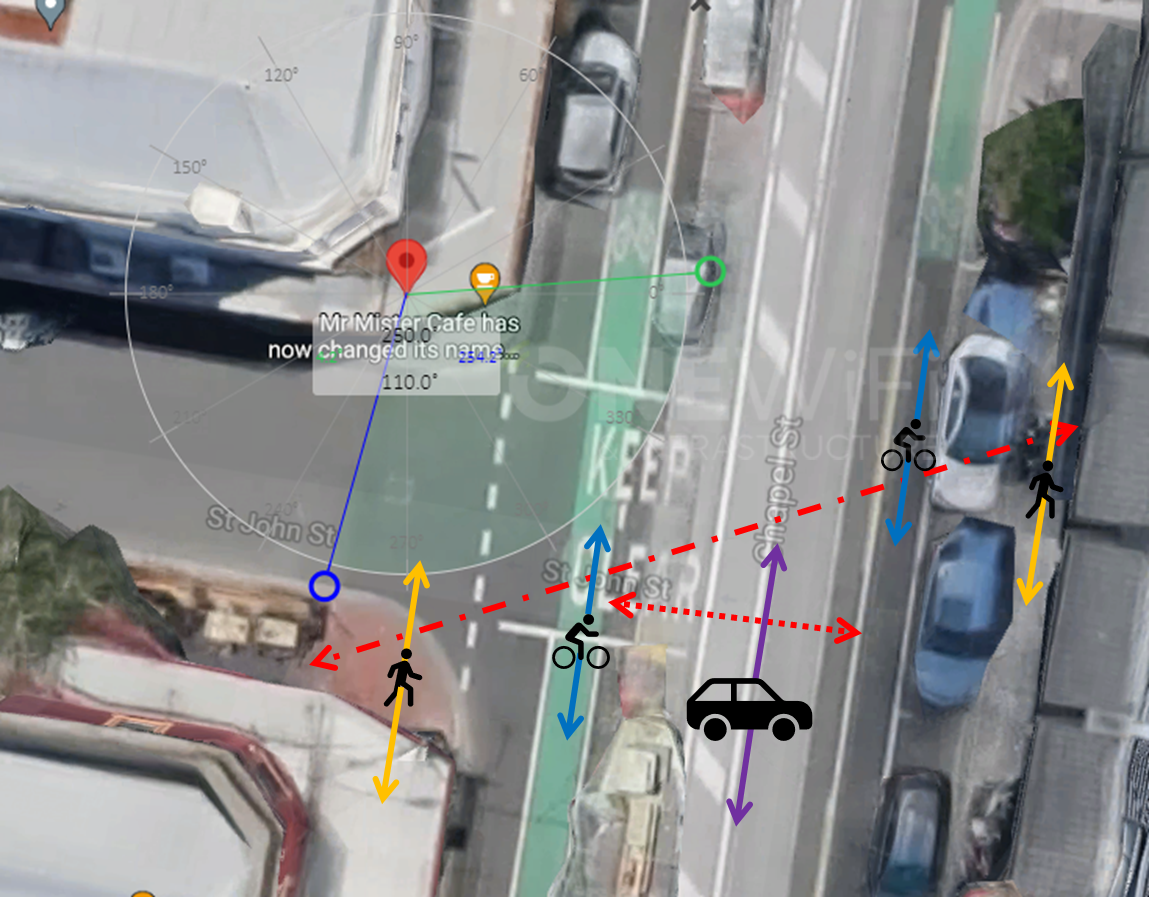
Exhibit-2-–-Video-analytics-for-traffic-monitoring-of-different-object-class
For situations where power is not available, where sensors are dispersed geographically, and data is updated infrequently, low-powered networks such as LoRaWAN and NB-IoT may be a better fit for remote monitoring applications. For examples, the water monitoring application for the water fountain and sprinkler system shown in Exhibit 3 are best serviced by LoRaWAN or NB-IoT as the water meters are located across multiple locations in underground pits and unpowered cabinets across a vast parkland. Other applications that we have found to work effectively over low-powered networks include waste level sensing, BBQ monitoring, and air quality monitoring.
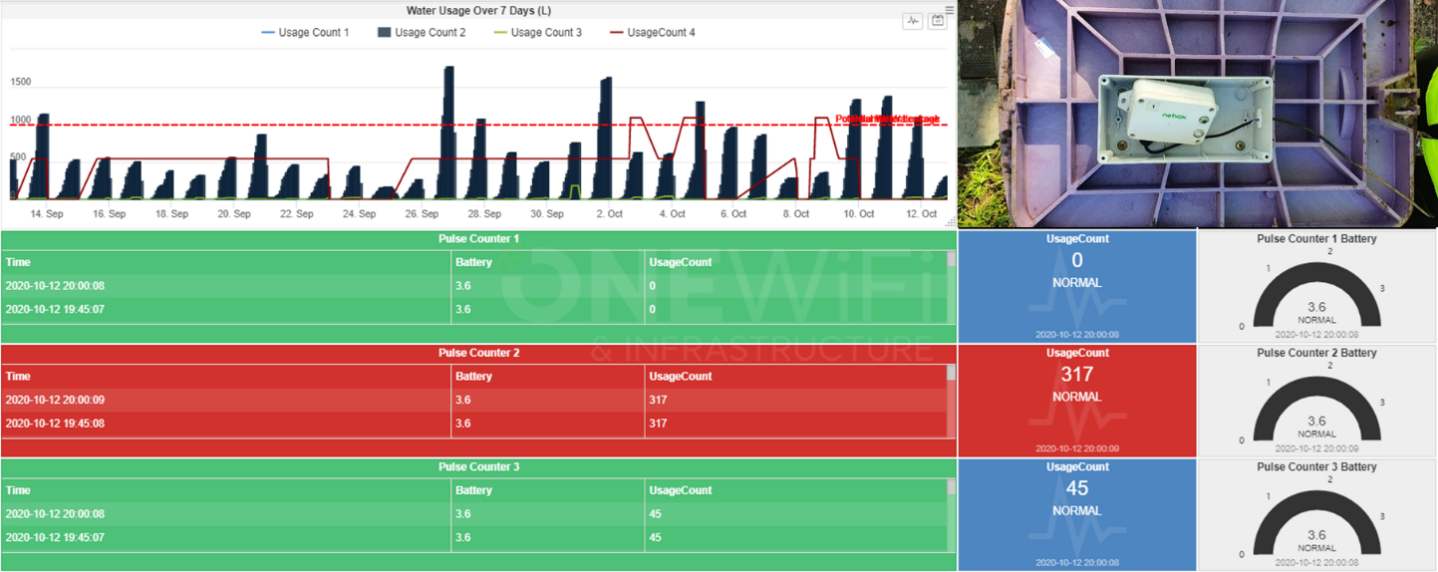
Exhibit-3-–-Water-monitoring-over-LoRaWAN-at-a-recreational-park
Smarter Infrastructure
Making the most of existing infrastructure assets, optimizing capital investments.
Smart City network deployment should also look to leverage common infrastructure, such as signage, smart poles, and renewable power assets to provide the underlying foundation for both low powered and high bandwidth wireless connectivity to support Smart City and IoT requirements. This delivers not just cost savings, but also improves visual aesthetics for smart city implementation, as shown in Exhibit 4.
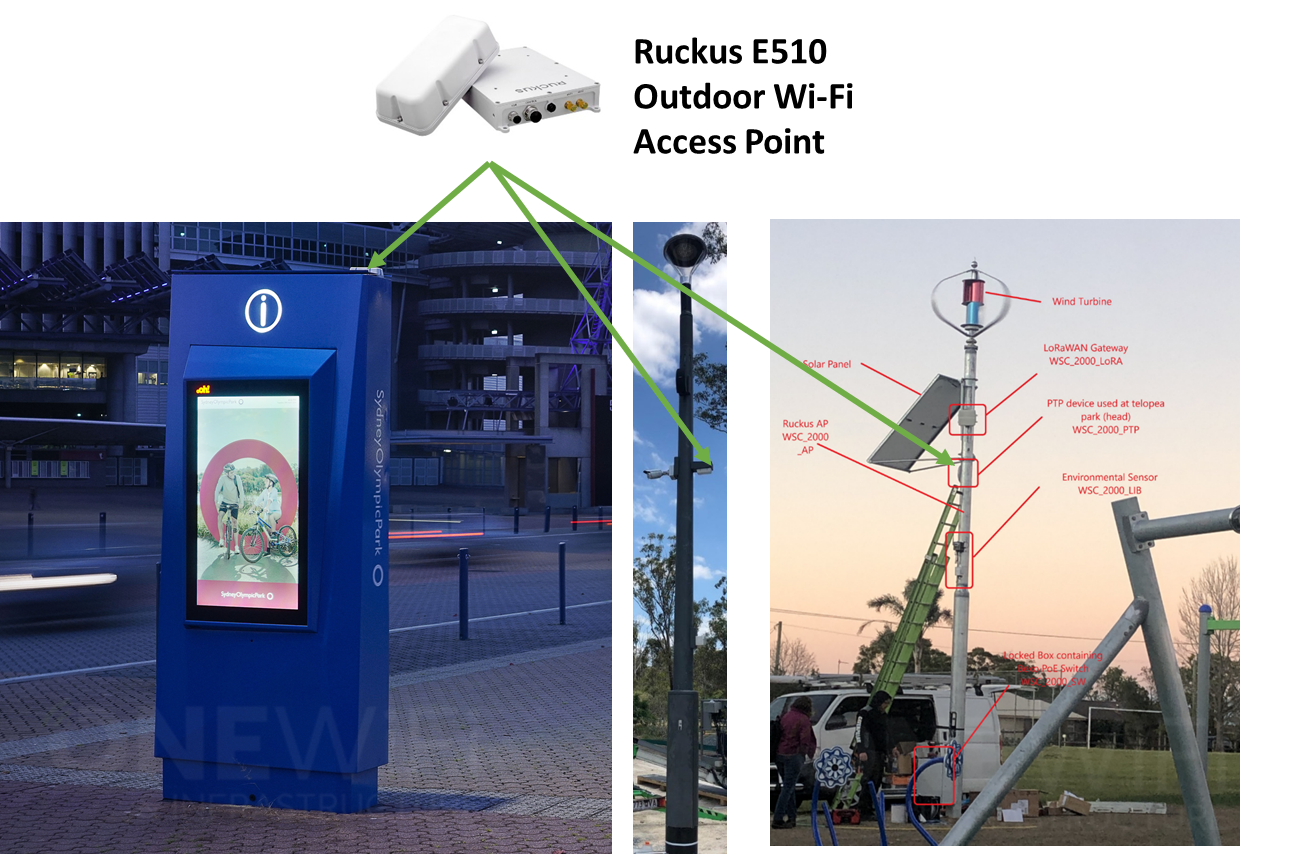
Exhibit-4-–-Smart-City-network-harmonisation-on-common-infrastructure
Smarter Platforms
Harmonising data across all Smart city solutions on Cloud Platforms
Harmonisation in Smart City implementation is not just restricted to onsite infrastructure at the sensor or network location, it can be extended to the platform level in the cloud. As Smart City is becoming increasingly mature, it can no longer be treated as a best effort service. The technology needs to be embedded into the operating model which would yield greater actionable outcomes over the status quo.
For instance, Smart City Platforms can provide rich IoT device and infrastructure management in an integrated and secure manner, similar to how an enterprise-grade network would be managed, despite at a lower service level. While there are IP-based technology elements within some Smart City applications, it is important to note that low-powered sensors and networks do not provide the same level of remote monitoring, access, and troubleshooting capabilities as IP-based devices and networks, and consequently cannot support enterprise-grade service levels (e.g. 99% availability). The lower service level is also driven by the fact that Smart City technologies are often deployed in remote and difficult to access locations, which makes maintenance activities highly challenging in certain cases.
Harmonisation at the platform level also enables opportunities to consolidate data for cross application analysis. Via standard-based protocols and methods, disparate applications and data can be consolidated into the Smart City Platform as shown in Exhibit 5. This provides a centralised operational view to derive near-real time and historical insights into the performance and utilisation of assets. With the implementation of automated alarms and notifications based on defined or dynamic threshold values across different applications, where timely and informed actions can be taken to address the potential issue.
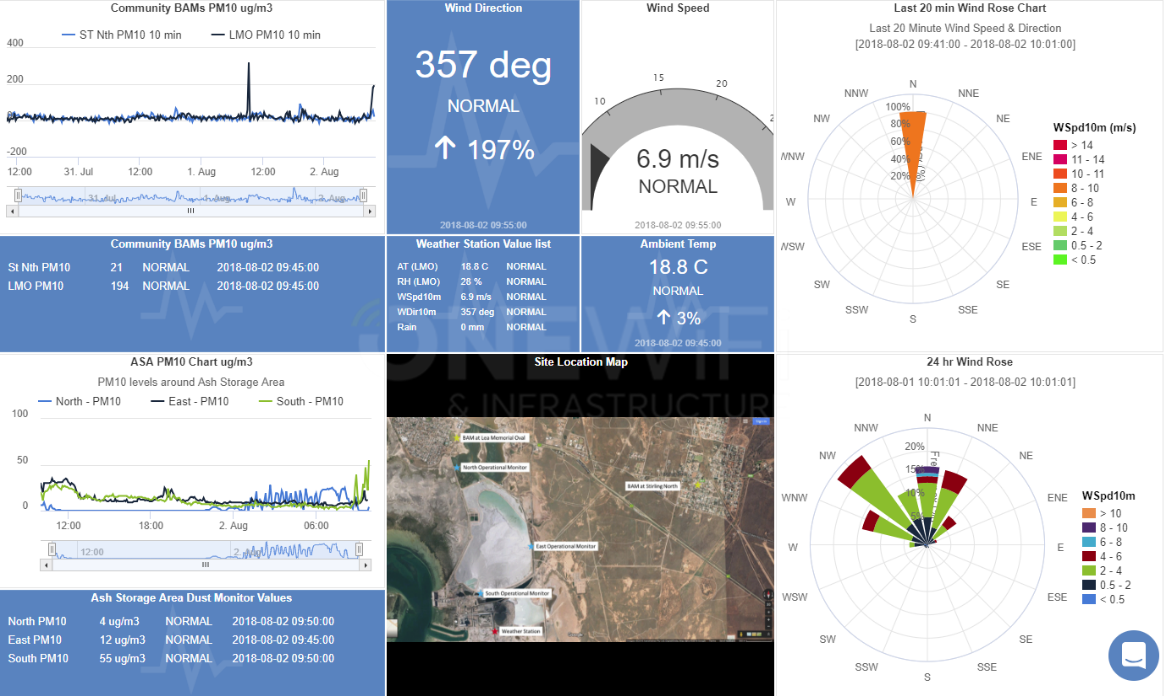
Exhibit-5-–-Cross-application-data-visualisation-on-Smart-City-Platform


